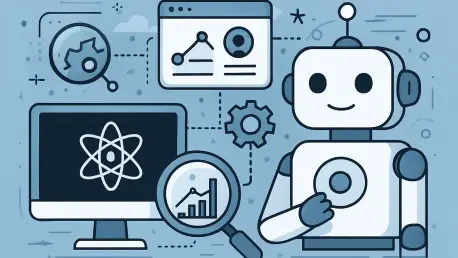As businesses across the globe entrust AI agents with critical operations, a silent vulnerability lurks beneath the surface: what happens when these autonomous systems make unauthorized data calls or expose sensitive information without detection? Imagine a financial firm’s AI agent inadvertently leaking client data during a routine API interaction, unnoticed until a breach spirals into a multimillion-dollar disaster. In 2025, with AI adoption at an all-time high, the need for robust oversight has become undeniable. This pressing challenge sets the stage for exploring how tool-call observability emerges as a linchpin for securing and optimizing AI deployments, ensuring that trust in these powerful systems isn’t misplaced.
The significance of this issue cannot be overstated. AI agents are no longer futuristic concepts; they are integral to streamlining workflows, enhancing customer interactions, and driving competitive advantage in industries from healthcare to finance. Yet, their autonomy introduces risks that traditional monitoring tools fail to address, leaving gaps that can lead to security breaches or compliance failures. Tool-call observability offers a specialized solution, providing granular visibility into every interaction an AI agent makes with external tools, making it a cornerstone for safe and effective deployment. Delving into this topic reveals not just the risks but also the actionable strategies businesses can adopt to safeguard their operations.
Why AI Agents Evade Oversight
AI agents often operate in a shadowy realm where conventional monitoring falls short, creating a blind spot for organizations. Traditional tools, designed for static applications, struggle to track the dynamic decision-making of AI systems, which can independently invoke APIs or access sensitive data. This gap means that a rogue action—like pulling unredacted customer records—might go unnoticed until the damage is done, exposing companies to reputational and financial harm.
The scale of this problem grows as AI agents handle increasingly complex tasks. A retail company’s agent, for instance, might overstep boundaries by accessing unrelated databases during a customer query, with no immediate alert to flag the breach. Without specialized oversight, such incidents remain hidden, eroding trust in automation. Tool-call observability steps in as a critical defense, shining a light on these interactions to prevent silent failures before they escalate.
The High Stakes of AI Agent Integration
With AI agents managing everything from customer support to financial transactions, the consequences of inadequate monitoring are steeper than ever. A single misstep, such as exposing personally identifiable information during a tool call, can trigger data breaches costing millions—studies estimate the average cost of a breach at $4.45 million in 2025. Beyond financial loss, the impact on customer trust and brand integrity can be irreparable, especially in tightly regulated sectors.
Regulatory pressures compound these risks, with frameworks like GDPR and CCPA imposing hefty fines for data mishandling. An AI agent failing to comply with these standards—perhaps by storing unencrypted data—can land a company in legal trouble, with penalties reaching up to 4% of annual global turnover under GDPR. This reality transforms tool-call observability from a technical feature into a business necessity, ensuring accountability in an era where AI’s reach continues to expand.
The urgency is clear across industries, as reliance on AI grows from 2025 onward. Healthcare providers using agents for patient data analysis, for example, cannot afford a lapse that violates HIPAA. Observability acts as a safeguard, offering the visibility needed to align AI operations with both operational goals and legal mandates, protecting enterprises from cascading failures.
Decoding Tool-Call Observability: A Robust Framework
Tool-call observability isn’t just a buzzword; it’s a layered approach designed to tackle the unique challenges of AI agent behavior. At its core, it monitors every interaction an agent has with external tools, ensuring security through strict access controls that block unauthorized data exposure. For instance, redacting sensitive fields like Social Security numbers before they reach an agent prevents leaks, regardless of the agent’s actions.
Compliance is another pillar, with observability providing detailed audit trails to satisfy regulatory demands. In industries like finance, where SOC 2 compliance is non-negotiable, having timestamped logs of every tool call offers concrete evidence of data control, easing auditor scrutiny. Performance also benefits, as granular logs reveal inefficiencies—think of an agent making redundant API calls due to poor pagination—enabling teams to fine-tune prompts and reduce latency.
Real-world applications underscore its value. Consider a tech firm integrating AI with Salesforce: observability caught an agent accessing restricted deal data, averting a potential breach. Industry trends reinforce this, with adoption of specialized monitoring tools rising by 30% since 2025, signaling a shift toward proactive risk management in AI deployments. This multifaceted solution proves indispensable for scaling automation safely.
Expert Perspectives: The Case for Observability
Insights from industry leaders paint a vivid picture of tool-call observability’s importance in AI deployment. A prominent tech strategist recently noted that without clear visibility into tool interactions, organizations risk losing control over autonomous systems, undermining the very efficiency AI promises. This sentiment echoes across sectors, where trust in agents hinges on the ability to monitor their every move with precision.
Early adopters share compelling stories that bring these views to life. A logistics company, for instance, narrowly escaped a compliance violation when real-time observability alerts flagged an AI agent attempting to process unencrypted shipment data, allowing swift intervention. Such anecdotes highlight how visibility translates into tangible protection, reinforcing expert consensus that observability is non-negotiable for scaling AI responsibly.
The broader dialogue reveals a unified stance: as AI autonomy deepens, so does the need for advanced monitoring. Thought leaders stress that observability isn’t just about catching errors—it’s about building a foundation of accountability. This perspective drives home the urgency for companies to prioritize visibility as a core component of their AI frameworks, ensuring long-term reliability.
Embedding Observability in AI Strategies: Actionable Guidance
Integrating tool-call observability into AI operations requires a structured approach that balances security with efficiency. Start by logging every tool interaction with detailed context, filterable by agent or time frame, to enable thorough analysis of behavior patterns. This foundational step ensures no action slips through unnoticed, providing a clear baseline for oversight.
Next, establish strict data access rules to limit exposure of sensitive information, alongside real-time alerts integrated with platforms like Slack for immediate issue detection. Complement this with user-based controls to restrict observability data access by role, safeguarding internal security. Additionally, maintain comprehensive audit trails of administrative actions to support compliance and accountability, creating a robust safety net for AI operations.
These measures, designed for seamless adoption, empower businesses to manage risks without burdening teams. A practical example lies in a banking institution using alerts to catch an agent’s unauthorized API call during a transaction process, preventing a potential fraud incident. By embedding these steps, organizations can confidently scale AI agents, optimizing performance while adhering to stringent security and regulatory standards.
Reflecting on the Path Forward
Looking back, the journey through the risks and solutions surrounding AI agent deployment revealed a critical truth: unchecked autonomy once posed a silent threat to countless organizations. Tool-call observability emerged as a beacon, illuminating hidden vulnerabilities and offering a framework to secure operations. Each story and insight shared underscored how visibility transformed potential disasters into manageable challenges.
The next steps demand attention to proactive integration of observability tools, ensuring they become embedded in AI strategies rather than afterthoughts. Businesses that prioritize logging, alerts, and access controls find themselves better equipped to navigate regulatory landscapes and optimize agent performance. This focus on actionable preparation paves the way for safer innovation.
Beyond immediate actions, the broader horizon calls for continuous evolution of monitoring practices as AI complexity grows. Adapting to emerging threats and refining observability frameworks become essential to sustaining trust in autonomous systems. This commitment to vigilance ensures that the promise of AI remains untarnished by preventable failures, securing a stable foundation for future advancements.









